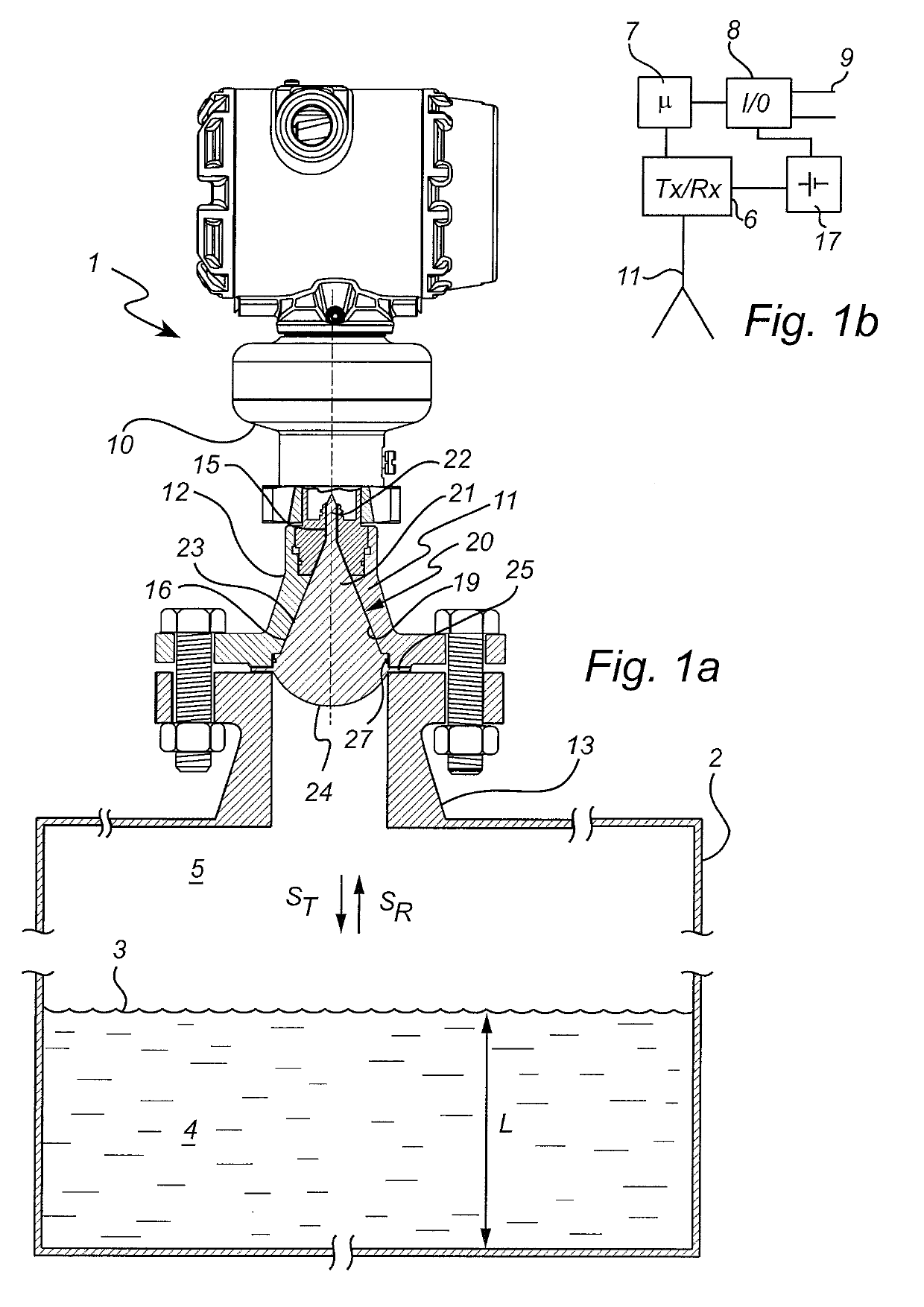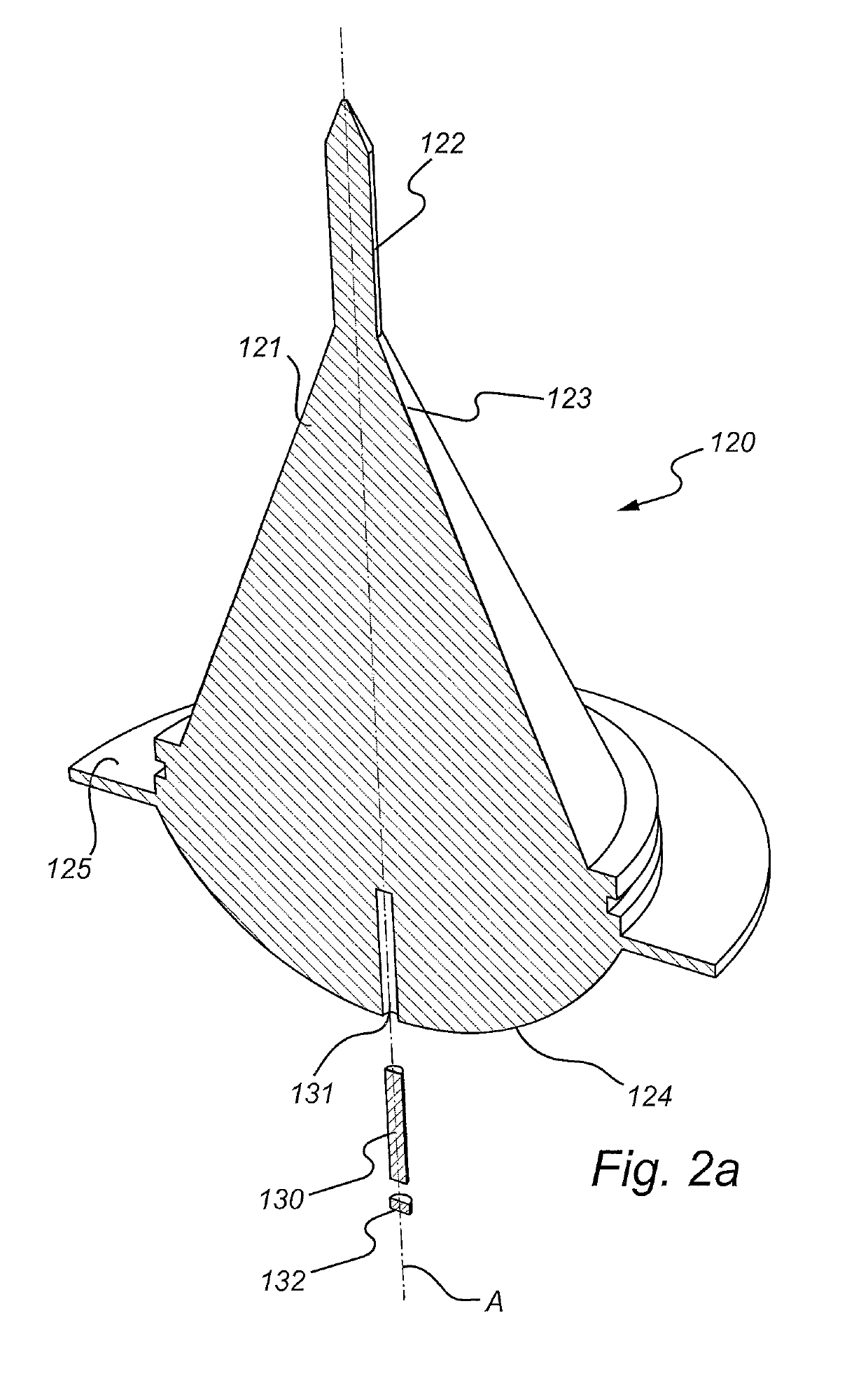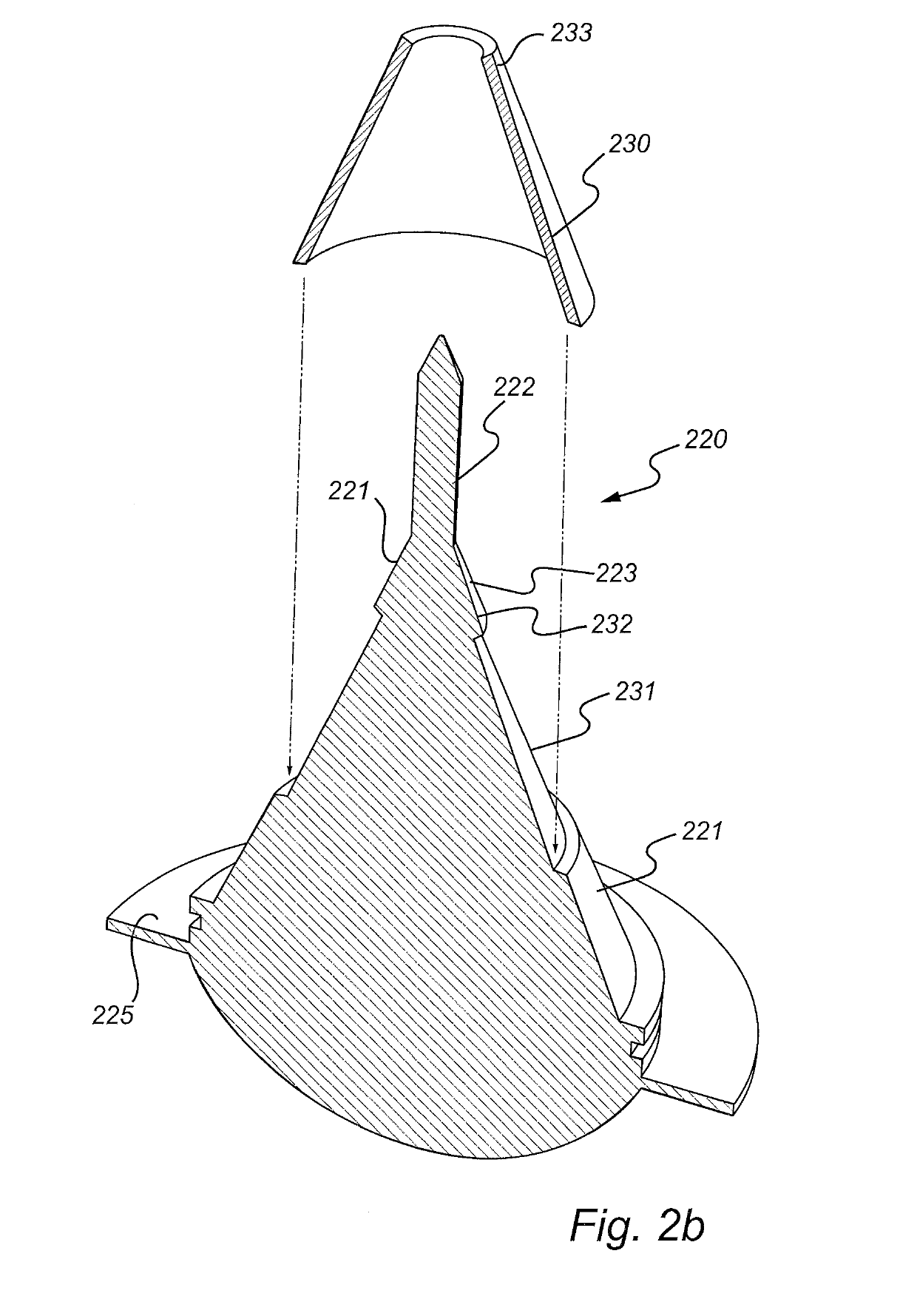Dielectric filling member with microwave absorbing element
a filling member and microwave technology, applied in the direction of engine lubrication, liquid/fluent solid measurement, antennas, etc., can solve the problems of large thermal expansion coefficient of suitable materials such as ptfe, high temperature (hpht) applications, and high temperature applications, so as to reduce disturbance and attenuation
- Summary
- Abstract
- Description
- Claims
- Application Information
AI Technical Summary
Benefits of technology
Problems solved by technology
Method used
Image
Examples
Embodiment Construction
[0035]A radar level gauge (RLG) 1 according to an embodiment of the present invention is illustrated schematically in FIGS. 1a and 1b. The RLG 1 is mounted on a tank 2, and arranged to perform measurements of a process variable such as the level L of an interface between two materials in the tank 2. Typically, the first material is a product 4 stored in the tank, e.g. a liquid such as gasoline, or a solid such as a granular compound, the second material is air or other atmosphere 5 in the tank, while the interface is the surface 3 of the product 4. In some applications, the tank is a very large metal tank (diameter in the order of ten meters).
[0036]The radar level gauge 1 includes transceiver circuitry 6, processing circuitry 7 and an interface 8, illustrated very schematically in FIG. 1. The RLG circuitry, i.e. the transceiver circuitry 6, processing circuitry 7 and a signal / power circuitry 8, is arranged in a measurement unit (MU) 10 mounted to a tank connection 12 made of a metal...
PUM
 Login to View More
Login to View More Abstract
Description
Claims
Application Information
 Login to View More
Login to View More - R&D
- Intellectual Property
- Life Sciences
- Materials
- Tech Scout
- Unparalleled Data Quality
- Higher Quality Content
- 60% Fewer Hallucinations
Browse by: Latest US Patents, China's latest patents, Technical Efficacy Thesaurus, Application Domain, Technology Topic, Popular Technical Reports.
© 2025 PatSnap. All rights reserved.Legal|Privacy policy|Modern Slavery Act Transparency Statement|Sitemap|About US| Contact US: help@patsnap.com



